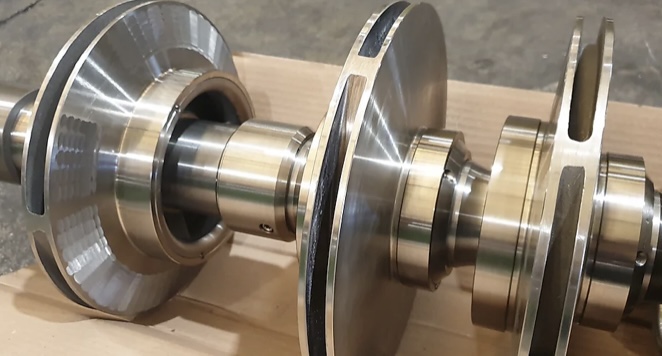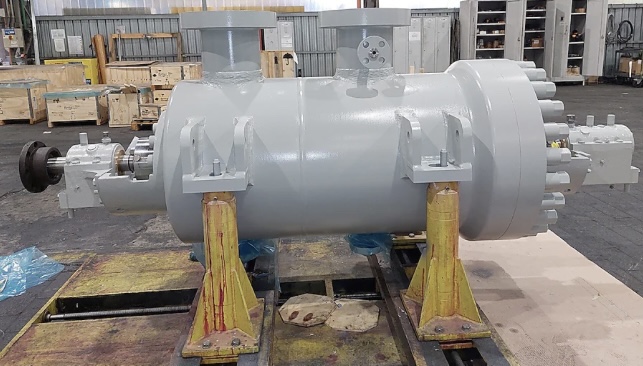The oil and gas industry hasn’t adopted additive manufacturing (AM) techniques to the same extent as some other large-scale industries, like the aerospace and automotive sectors. Nonetheless, oil and gas companies were fairly early adopters of AM, and some of the largest companies have made substantial investments in the technology.
Moreover, it appears that, with investor money gradually starting to return to the sector, oil and gas companies are picking up the pace with which they incorporate new manufacturing processes. One such company is Shell: among the largest companies in the world, and a user of AM for over a decade. According to the company’s 3D printing technology lead, Angeline Goh, Shell recently put into action 3D printed impellers for a centrifugal pump at the Shell Energy and Chemicals Park in Rotterdam.

In a press release, Goh explains, “[AM] has been used at Shell over the last ten years. Still, the criteria and testing to ensure the technical integrity of 3D printed parts remains very demanding. It is not easy to qualify a 3D printed part for deployment in our operations, especially for production critical applications.”
This is why, on an earlier project, Shell worked for four years to gain third-party certification of its 3D printed pressure vessels. When Shell gained certification from LRQA (formerly Lloyd’s register) for the pressure vessels, it became the first European company to have a CE certified, in-house printed part.

On the 3D printed impellers project, Shell also worked with Texas-based Baker Hughes, one of the largest oilfield services firms in the world. Similarly to the work on the pressure vessels, Goh notes that, “A key objective of this collaboration…was to design a repeatable qualification process for vendors of 3D printed parts.” She adds that Baker Hughes has been qualified by Shell to supply the company’s oil operations in Italy, and that the two firms are working together to create a digital portfolio of impellers.
Keeping spare parts on hand for each pump in operation costs Shell about $100,000, so switching to a digital, print-on-demand supply chain could obviously save a great deal of money. This is especially important at a time when oil supermajors are trying to attract investor dollars, and thus need to prove that they can streamline and effectively manage supply chains. The oil industry also operates in remote locations all over the planet, adding an extra incentive for a company like Shell to take its inventory control into its own hands.
That this story, as well as one last month from Chevron, have been released in such close proximity to one another, suggests that the oil and gas industry has entered a new phase in its incorporation of 3D printing. The fact that regulatory requirements for 3D printed parts are now being established and met means that more and more companies are likely to follow suit. It’s no surprise then that SmarTech Analysis projects AM for oil and gas to be a $2 billion opportunity by 2029, according to its “The Market for Additive Manufacturing in the Oil and Gas Sector 2018-2029” report.
Subscribe to Our Email Newsletter
Stay up-to-date on all the latest news from the 3D printing industry and receive information and offers from third party vendors.
You May Also Like
Further Understanding of 3D Printing Design at ADDITIV Design World
ADDITIV is back once again! This time, the virtual platform for additive manufacturing will be holding the first-ever edition of ADDITIV Design World on May 23rd from 9:00 AM –...
3D Printer Maker EVO-tech Reborn as NEVO3D — Once More With Feeling
EVO-tech was a 3D printing service and original equipment manufacturer established in 2013 and based in Schörfling am Attersee, Austria. The company produced high-quality material extrusion systems featuring linear bearings,...
3D Systems Brings 3D Printed PEEK Cranial Implant to the U.S. with FDA Clearance
For more than 10 years, 3D Systems (NYSE:DDD) has worked hand-in-hand with surgeons to plan over 150,000 patient-specific cases, and develop more than two million instruments and implants from its...
CDFAM Returns to Berlin for Second Annual Symposium
The second CDFAM Computational Design Symposium is scheduled for May 7-8, 2024, in Berlin, and will convene leading experts in computational design across all scales. Building upon the first event...































